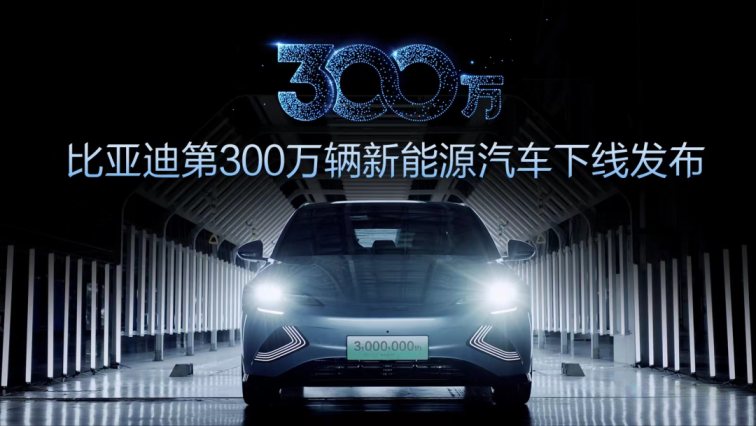Author: Zheng Senhong
According to the official data from China Association of Automobile Manufacturers, 2022 is a year of “doubled growth” for new energy vehicles.
Throughout 2022, the cumulative sales volume of new energy vehicles in China is 5.674 million, a 90% year-on-year increase compared to 2021; The penetration rate of new energy vehicles throughout the year reached 27.6%, a 12.6% increase compared to 2021.
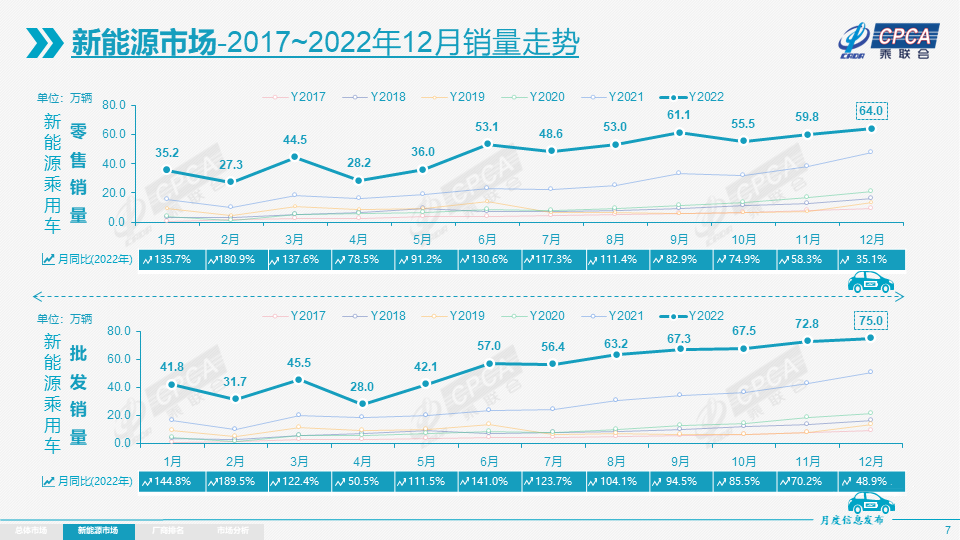
The domestic new energy market isn’t particularly smooth this year. The global supply chain is tense, leading to the continuous rise of battery raw materials and the shortage of chips. The repeated impact of the epidemic on production and supply pace… These factors have continuously challenged new energy vehicle companies in 2022.
However, this year has also become a year for catch-up players to shorten the gap. NIO delivered new models, Leapmotor went public in Hong Kong, Huawei built cars under the name of “Question”, BYD overtook Tesla to become the new energy sales champion, and NETA sold cars in Southeast Asia.
Sales volume is undoubtedly the most effective benchmark for market positioning.
With the release of December sales data from major new energy vehicle companies, 2022 also ushered in the final answer to the sales volume test.
One sentence summary of the 2022 new energy vehicle market sales performance: Tesla’s myth is broken, NIO regains new life, the second echelon of new forces emerges from the siege, and the knockout round starts early.
Dual Giants Leading the Way: BYD Tops Global New Energy Vehicle Sales, Tesla Retains Pure Electric Vehicle Sales Championship
A million-level volume can be said to be the lifelong goal of many car companies.
From 2009 to 2017, there were 9 host factories in the domestic automobile market whose annual sales volume exceeded 1 million vehicles for the first time. In chronological order, they are SAIC-GM-Wuling, SAIC, SAIC Volkswagen, FAW-Volkswagen, Beijing Hyundai, Dongfeng Nissan, Changan Automobile, Great Wall Motors, and Geely Automobile.
After 2017, there have been no newcomers to the “million-selling camp” of the domestic automobile market.
With the end of the infancy period of new energy vehicles, the pattern of the automobile market began to change.
In 2022, two car companies with sales of more than one million emerged in China’s new energy vehicle market, BYD and Tesla, starting the global competition.### (1) BYD proves its decision in the 365 days
Among numerous traditional automakers at home and abroad, BYD is the company that transforms to NEVs most resolutely and decisively.
In March 2022, BYD announced to “stop producing fuel vehicles”, becoming the first traditional automaker in China to give up fuel vehicle production. All in NEVs, BYD achieved an increase in sales instead of a decrease. The total sales of BYD NEVs in 2022 reached 1.8635 million units, a year-on-year increase of 208.64%.
Specifically:
-
The sales volume of BYD hybrid models was 946,000 units, an increase of 250.3% compared with last year;
-
The sales volume of pure electric models was 911,000 units, an increase of 184.6% compared with last year.
The proportion of the two is relatively balanced, and the explosive increase in sales has brought two “firsts” to BYD:
-
One is that BYD has ended the history of being dominated by joint venture brands for nearly 40 years in China’s auto market;
-
The other is that BYD has regained the global sales champion of NEVs from Tesla with an advantage of over 500,000 units.
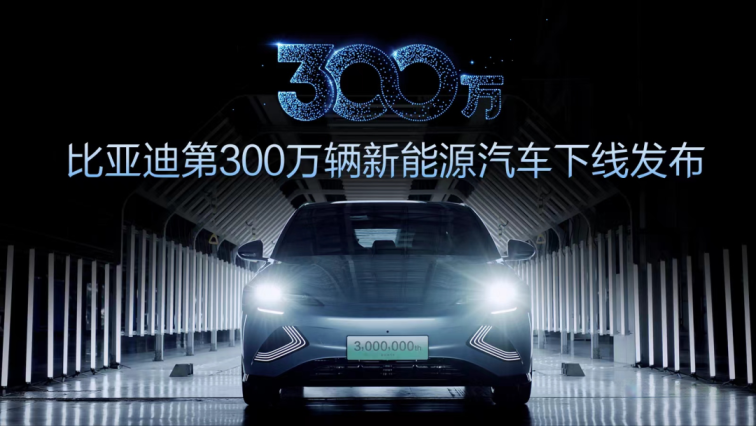
With the appearance of positioning the million-level high-end market to look up to the brand, and the advance notice of the highly professional and personalized new brand, BYD will form five brand matrices from 2023, which are “Dynasty”, “Ocean”, “Tang”, “Yinghong”, and “Professional personalized new brand”:
-
BYD Ocean Network is aimed at young people
-
Dynasty Network is aimed at luxury
-
The Tang brand is aimed at technology + luxury, with the luxury genes of Mercedes-Benz and the technology of BYD combined;
-
The Yinghong brand is aimed at the ultra-luxury market,
-
The new brand is aimed at personalized needs.
The price range of BYD products ranges from 100,000 yuan to 1 million yuan. No new energy vehicle brand has such a vast product matrix covering all sub-markets.
The fastest speed for BYD to go from producing 1-100 thousand NEVs is six months. In the words of Wang Chuanfu, this is “BYD’s NEV acceleration”.For the year 2023, it’s reported that Wang Chuanfu’s goal is 4 million cars, which means that if BYD wants to achieve this goal, it needs to achieve a year-on-year growth rate of over 115\% based on 2022 sales.
BYD responded that due to the uncertainty of the market and consumer demand, the supply chain system, etc., it’s difficult to judge the sales target for 2023.
(2) Tesla, having stabbed its customers in the back, enters into a phase of sluggish demand
As a benchmark brand in the industry, Tesla, although losing the sales crown of new energy vehicles in 2022, still maintains the No.1 position in global sales of pure electric vehicles.
Specifically, Tesla delivered a total of 1.31 million new cars in 2022, with a production volume of about 1.369 million, a year-on-year increase of 40\%, achieving Tesla’s “double-hundred” production and sales record for the first time in history.
Among them, Model 3 and Model Y, both from Tesla, have delivered a cumulative total of 1.247 million units in 2022, still the backbone of Tesla’s sales.
The “double-hundred” achievement means that Tesla has overcome the predicament of production capacity limitation, but the growth rate of sales has slowed down significantly.
In 2022, the growth rate of Tesla’s product sales volume was only 40\%, far lower than 87.4\% in 2021, so it naturally did not reach Tesla’s sales target of 1.5 million units and 50\% growth rate set for 2022.
The problem is not with the Chinese market.
In 2022, Tesla’s Shanghai Super Factory delivered a total of over 710,000 units, accounting for a high proportion of 54.2\%. The figure is almost close to Tesla’s annual growth target of 50\% since it was up to 51.7\% in 2021, and once again occupies “half the country” of Tesla’s global deliveries.
Among them, Tesla delivered 316,600 Model Ys and 125,100 Model 3s in China, the world’s largest new energy vehicle market.Although Tesla has achieved 50% of Musk’s market growth target, the significant advantage in sales in the Chinese market is largely due to the frequent price reductions and promotions by Tesla in the fourth quarter of 2022.
On January 6th of this year, Tesla once again announced that all models available for sale on their Chinese official website would be reduced to a historic low price.
As for the reason, Tesla officials still cite the “cost pricing method” as an old excuse. However, it is clear that with the increase in production capacity, weak orders, and over 95% localization of the supply chain, there is not much credibility.
Announced simultaneously with the price drop of the Model 3/Y, the Model S/X made a comeback two years after being removed from the market.
Both BYD and Tesla will face increasingly fierce direct competition in terms of both the products sold and the sales areas in the market.
However, uncertainty remains as to how much bargaining power Tesla will still retain, as the new energy vehicle market is rapidly developing, and both traditional car companies and new players in the automotive industry continue to challenge Tesla.
What is certain is that the two giant companies in the electric car era will chase each other in the market of millions, and it is difficult for challengers to join in the short term.
The landscape of new car-making forces is changing: NETA tops the annual delivery, and the Ideal station sells 20,000 vehicles a month.
If BYD and Tesla are still in a steady growth phase in 2022, then Chinese new car manufacturers have returned to a state of chaos from their previous “first-level stability, second-level entry” phase.
Looking at the data for the entire year, there are no absolute winners among the first-level new car manufacturing companies, and the second-level new car manufacturing companies are in a period of intense sales growth. However, they did not maintain consistently high sales throughout the year and did not win the competition fully.
(1) Sales champion NETA: Breaking into the high-end market but actually standing still
In 2022, NETA Motors delivered a total of 152,100 vehicles, a year-on-year growth of 118.26%, exceeding the sales target of 150,000 vehicles.
This is the first new car manufacturing company to sell more than 150,000 vehicles annually, and it is also the brand with the highest sales among new car manufacturers.
In terms of specific data:
-
The NETA V, priced below RMB 100,000, delivered 98,847 vehicles over the year, accounting for 65% of total sales;
-
The NETA U, priced around RMB 150,000, delivered 51,021 vehicles in total, a year-on-year increase of 155%, accounting for 33.55% of total sales.
-
Targeting the mid-to-high-end market, the first delivery of the NETA S with a selling price of over 200,000 yuan will only be 2,003 units in its initial month of delivery (December 2022).
It can be seen that the structure of NETA’s products is still concentrated in the 100,000 to 150,000 yuan level, with a low-profit, high-cost performance focusing on the mid-to-low-end market, and even escaping the suspicion of being highly dependent on the B-end market.
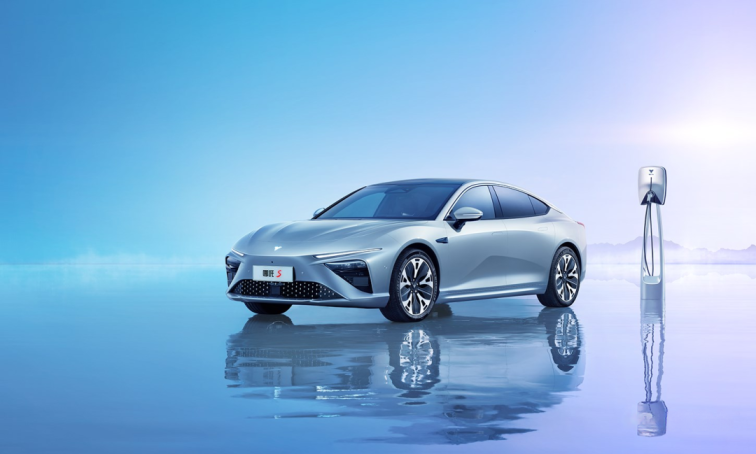
At the 2022 Guangzhou Auto Show, NETA Automotive revealed its first two-door four-seat sports car, the NETA E, which has passed the certification of the Ministry of Industry and Information Technology and will be in mass production and delivery by the first half of 2023.
With the completion of the product matrix and the filling of the extended market, NETA CEO Zhang Yong has set the 2023 sales target KPI at “250,000 units”, but whether NETA can accommodate this ambition still has a question mark.
From a product perspective, NETA S, which is regarded as a high-end product, belongs to the B-class market which has long been a fierce competition market, while the sports car market to which NETA E belongs is obviously a niche market.
For NETA, optimizing costs, reducing losses, and again impacting the IPO is still the biggest challenge.
(2) The market segmentation strategy based on price and seat differentiation, the ideal nesting economics
In 2022, among new players, the ideal delivery volume is first in “Weixiaoli” Third Middle School, with an annual delivery of 133,200 units, a year-on-year increase of 47%. Among them, in December, Ideal Auto had a new high of 21,233 monthly deliveries, becoming the first new energy automaker to deliver more than 20,000 vehicles in a month.
This also means that after the launch of L8, there has not been a situation where the two previously expected L8 and L9 models are competing within each other, instead, they have each found their own product positioning, opening up product differentiation according to price and seating capacity.
 In the eyes of Liu Jie, the vice president of Ideal Sales, the result of 2022 might just be the starting point for Ideal in 2023, because the current reserved orders for L8 and L9 are relatively sufficient, and the delivery time for users has already been scheduled after the Spring Festival.
In the eyes of Liu Jie, the vice president of Ideal Sales, the result of 2022 might just be the starting point for Ideal in 2023, because the current reserved orders for L8 and L9 are relatively sufficient, and the delivery time for users has already been scheduled after the Spring Festival.
Regarding the sales expectations for 2023, Liu Jie believes that the average steady monthly sales volume of L9 is between 8,000 and 10,000 units, and the steady monthly sales volume of L7 and L8 is between 10,000 and 15,000 units.
Based on this calculation, the Ideal sales volume in 2023 will reach about 350,000 units.
Reflected in the organizational structure, Ideal learned from the management mode of large-scale enterprises last year, established a matrix organizational structure, and made a series of personnel adjustments.
It is foreseeable that Ideal will be led by the technology faction in the future, and compared with the expected R&D expenses of 7 billion yuan in 2022, Ideal will increase to between 10 to 12 billion yuan in 2023 to accelerate the improvement of its self-developed system.
(3) NIO’s solution through multi-point blossoming
In 2022, NIO delivered a total of 122,500 new vehicles, a year-on-year increase of 34%, ranking second among the “Xiaoli” trio.
Through the segmentation market list, NIO can be said to dominate the high-end pure electric market above 300,000 yuan.
Among them, ET7, ES7, and ES8 ranked the top three with scores of 22,900 units, 13,700 units, and 13,500 units, respectively, while ES6, EC6, and ET5 squeezed into the top five of 300,000-400,000 yuan with scores of 42,300 units, 17,200 units, and 10,400 units, respectively.
According to NIO’s official data, in December 2022, the combined delivery volume of the ET7, ES7, and ET5 models based on the NIO NT2.0 platform was about 13,000 units, accounting for more than 80% of the total delivery volume for the month.
 In NIO’s view, this marks the successful market transition of its first and second generation platform models.
In NIO’s view, this marks the successful market transition of its first and second generation platform models.
“In 2023, NIO is very confident about the sales volume of fuel vehicles from Lexus produced after 2022.”
This is the sales target of Li Bin for 2023, as well as his belief that 2023 will be the year of NIO’s second generation (NT 2.0) platform transition and sales release.
Currently, NIO has a total of five SUVs: ES6, ES7, ES8, EC6, EC7, and two sedans: ET5 and ET7.
According to the plan, by June 2023, in the price range of 300,000 to 500,000 yuan, NIO will have eight models on sale, one of which will be benchmarked against Model Y.
Nowadays, NIO’s business strategy is to continuously expand its coverage of both mainline categories of SUVs and sedans. However, if NIO’s sales data is broken down, the average sales volume of each product is rarely more than 5,000 units.
After the launch of new cars, such as ET5, in 2022, NIO faced questions such as, “Three models sell 10,000 units a month, and five models also sell 10,000 units a month.”
Whether to adopt a “popular single product” route or a “popular matrix” strategy may be the key factor determining whether NIO can return to its leading position.
(4) XPeng is gearing up for heavy-duty sales with monthly sales returning to 10,000 units
In December 2022, XPeng’s deliveries returned to the 10,000-unit range, with a total of 11,300 units delivered, an increase of 94% compared to the previous month.
Among them, the monthly delivery of XPeng G9 exceeded 4,000 units for the first time, with an increase of 160% compared to the previous month; and the cumulative delivery volume of XPeng in 2022 was about 121,000 units, an increase of 23% compared to 2021.
In 2022, the most important thing for XPeng Motors is the launch of G9. Unlike the G3 and P7 series products priced between 150,000 and 300,000 yuan, G9, with a starting price above 300,000 yuan, is regarded by He XPeng as an “important chess piece” to reach the mid-to-high-end market.
 But due to a strategic error, G9 failed to achieve the expected market reputation. In the second full month of delivery, only a little over a thousand vehicles were delivered.
But due to a strategic error, G9 failed to achieve the expected market reputation. In the second full month of delivery, only a little over a thousand vehicles were delivered.
Looking back at 2022, He XPeng believed that two things were not done well:
-
First, failing to assess the industry changes and macro changes affecting the automotive industry, such as the 60\% increase in battery cell prices, which led to a 20\% increase in the overall vehicle cost.
-
Second, the lack of adequate preparation for G9’s launch, as XPeng was too focused on technological innovation, which ultimately serves the customers. Therefore, although they did something during the process of technological innovation to customers, it was not done well enough.
After two consecutive failures, XPeng launched its largest organizational restructuring in history in the fourth quarter of 2022, establishing five virtual committee organizations and three product matrix organizations. The former is responsible for enhancing communication and cooperation among various business lines, while the latter shoulders the heavy responsibility of opening up end-to-end product business loops.
In XPeng’s view, planning and organizational abilities are the most critical fundamental abilities of an automotive enterprise. XPeng is currently in the stage from 1 to 2, considering how to screen outstanding talents and how to motivate them with reasonable mechanisms.
In terms of new products, XPeng will launch three new models in 2023, namely:
-
P7 facelift model;
-
An SUV model with the internal code name F30;
-
An MPV model with the internal code name H93.
Whether these new vehicles can become XPeng’s sales support or not, perhaps as XPeng said: “The competition of intelligent electric vehicles is a marathon race, a challenging journey. The essence of a marathon is not who leads during the process, but who can persist until the end.”
(5) Sprint for Gross Margin, Zero Run Leverages Range
In 2022, Zero Run successfully crossed the “life and death line of car building” and delivered a total of 111,200 vehicles for the year, a year-on-year increase of 154\%, becoming the fastest-growing player among the new forces of domestic car building.
It can be seen that the once lagging NETA and Zero Run are now at the same level as “WmAuto Lishi”. A big reason for NETA and Zero Run’s success in 2022 is due to the dislocated competition formed with “WmAuto Lishi” in terms of product and marketing strategies.
In terms of product sales, the main products of NETA and Zero Run are in the 100-200 thousand yuan range, which happens to be the “backyard” that “WmAuto Lishi” has yet to address. For example, the A00-level sedan T03, priced at around RMB 80,000, which accounted for over 90\% of Zero Run’s total sales, played a significant role in boosting Zero Run’s sales.Through the boost of sales performance, Leapmotor successfully landed on the Hong Kong Stock Exchange in September last year. Although the initial listing results were not satisfactory, compared to other new carmakers, Leapmotor obtained an additional financing channel, which is equivalent to obtaining a ticket to enter the final round.
According to the plan, Leapmotor will launch 7 new pure electric models by the end of 2025 at a rate of 1-3 models per year. In addition, the extended-range version of the Leapmotor C11 will begin delivery in the first quarter of 2023.
Making cars is like running a marathon with challenges at every stage.
In 2021, Xiaoli Wei celebrated the achievement of reaching 100,000 annual sales and crossed the life-or-death threshold from 0-1. However, Xiaoli Wei has a long way to go to achieve profitability during the verification period of 0-1.
As for NIO and Leapmotor who want to prove themselves with bigger and more expensive cars, there is still uncertainty whether they have the capability to sell cars for 200-300 thousand yuan, compared to Xiaoli Wei’s established market position and brand premium.
The most likely scenario is that NIO and Leapmotor, the two “comeback players,” will compete with each other, as their new models are very similar in terms of positioning and price.
Dark Horse: GEEK+ exceeds KPIs and crosses the 300,000 target in WJ Maze Challenge
From the market structure perspective, the rise of middle forces is very obvious; the dumbbell-shaped pricing structure – NIO and Leapmotor are targeting the market below 100,000 yuan, while WJ and GEEK+ are targeting the market of 250,000-350,000 yuan.
The base price of the WJ M5 and M7 is about 250,000 and 300,000 yuan respectively, while the base price of the GEEK+ 001 is at the 300,000 yuan level. Both are competing in the low-price and luxury markets.
(1) Three billion yuan red envelope, GEEK+ exchange Li Shufu’s high-end dream
In 2022, GEEK+ cumulative deliveries reached 72,000 units, breaking through 10,000 units for three consecutive months.
This means that the GEEK+ 001 has become the second domestic brand to achieve monthly sales of over 10,000 units in the 300,000 yuan price range, after the Ideal ONE, and also the first pure electric vehicle to achieve this sales performance.
From its high starting point, to the low point of public opinion crisis, to the high point of turning the tide against headwinds, it ultimately achieved both good reputation and sales performance.
Looking back at the growth of the GEEK+ 001 from a god’s-eye view, “[spending] 3 billion yuan to give away 8155 cabin chips for free” is the best thing GEEK+ has done in 2022.“`

This is the turning point of Jidu 001’s fate and also represents the wisdom of Jidu’s brand strategy.
As an enterprise backed by traditional independent brands, Jidu not only has stronger mechanical calibration capabilities, but also still has the discourse power that new forces cannot easily obtain on the supply side. The industry’s first Kirin battery launch is a typical embodiment.
With the formation of market feedback, Jidu gradually formed its own brand label in the market: driving experience and high-quality car-making craftsmanship.
According to the plan, Jidu will launch a sedan and an SUV in 2023. Among them, the SUV will be launched in the first half of 2023, positioned lower than Jidu 001.
For Jidu, 2025 may be a crucial time node because that is the day Jidu fulfills its promise.
Jidu 001 and 009 currently use Mobileye chips and SuperVision systems, and last year Jidu announced that it became the first car brand to use Nvidia’s Thor chip and develop software based on the chip. As the successor to Orin, Thor’s single computing power has increased by 8 times.
(2) Starting with Asking the World, Huawei Speeds up Expanding Its Circle of Car Friends
In 2022, AITO Group successively released three models: Wanjie M5, Wanjie M7, and Wanjie M5 EV.
In March 2022, after the delivery of Wanjie M5 began, it set a new record for the fastest sales of a single new brand model with sales exceeding 10,000 in 87 days. In August, the delivery volume of Wanjie reached 10,045, creating the fastest record for monthly delivery of more than 10,000 of a domestic new energy vehicle brand.
Wanjie’s rapid rise undoubtedly added some variables to the competition pattern of domestic new energy vehicle companies.
In 2022, Wanjie delivered more than 75,000 vehicles in total, although it failed to achieve the sales target of 80,000, it is still one of the fastest-growing new brands.
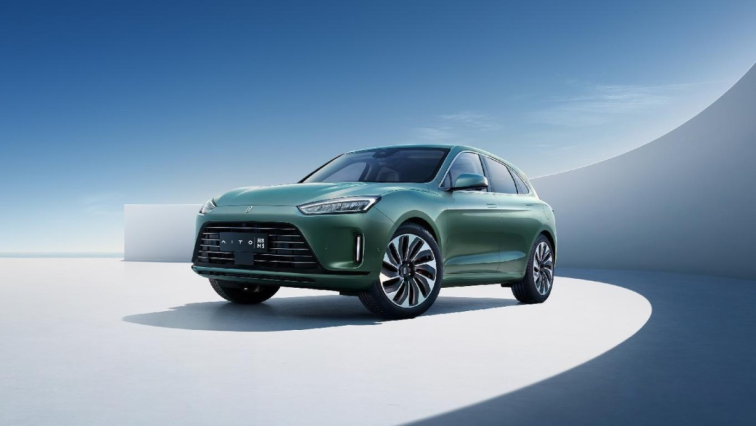
“`According to the terminal results, AITO AITO has gained a foothold as a “top domestic brand of intelligent electric vehicles” in China.
From the birth of the AITO AITO brand, it has been closely associated with Huawei, and Huawei’s extensive involvement in the intelligent cockpit experience has not only been a leader in the design and user definition of the car, but also provided powerful all-round support in sales channels.
Products created under this mode, such as the AITO M5/M7, have been surrounded by a brand aura since their birth, and Huawei’s series of software and hardware solutions have naturally become the core competitiveness of this car.
For other traditional car companies similar to Tesla, facing the dual R&D tasks of car manufacturing and software development, the value of joint ventures between technology companies and OEMs lies in their complementary advantages, and the success of AITO AITO also stems from this.
Currently, Huawei’s Smart Selection Car has spread widely in the industry, and in addition to Jinlong New Energy, it has successively established Smart Selection Car partnerships with Chery Automobile, JAC Motors, and Lynk & Co.
In terms of brand size, although Geely and AITO AITO still have a gap compared to “WmAuto Li”, their deeper significance lies in their clearer delineation of the price path for new car manufacturing “from 0 to 1”, and it can even be said that they have directly demarcated the territory of the current new car manufacturing.
2023: Accelerating Darwinism, a new war begins
The elimination match for new car manufacturing will come earlier than expected.
This is reflected in the competitiveness of the market. 2022 was the most intense year for new car products, and the speed of the counterattack by traditional car companies was beyond imagination.
This means that some brands that originally had the advantage of being first may lose that advantage if they are not careful. WM Motor is the best example of this.
The sales target at the beginning of the year was based on comprehensive judgments of the product, supply, channel, and market for the whole year.
The completion of the sales target near the end of the year can basically reflect whether the market prediction at the beginning of the year was biased and whether the product strength for the whole year was overestimated.
According to the China Association of Automobile Manufacturers, it is expected that in 2023, China’s new energy vehicle sales will reach 9 million vehicles, a year-on-year increase of 35%.
Currently, the top new car manufacturing companies have not yet escaped from the quagmire of “selling at a loss”.With the withdrawal of the national new energy vehicle purchase subsidy policy of 126,000 RMB, car companies need to reduce costs through technological means, while raw material prices and sales will also affect the pricing of new energy vehicles.
How to reduce costs and increase efficiency, digest the cost pressure brought by the rise of chips and lithium materials, and at the same time strive for consumer recognition, are the challenges that new energy vehicle companies have to face.
Li Bin once believed that the domestic new energy vehicle market will bear certain pressure in the first half of 2023, and it is expected to gradually recover in the second quarter. 2024 and 2025 will be the final stage of the electric vehicle competition, and if they fall behind the first echelon, it is basically impossible to catch up.
This also indicates that the competition for new car manufacturing will only become more intense and the industry structure will continue to dynamically adjust.
Under the rule of “big fish eats small fish, fast fish eats slow fish”, who will be the last one to laugh? Everything still needs to be waited and seen.
This article is a translation by ChatGPT of a Chinese report from 42HOW. If you have any questions about it, please email bd@42how.com.
